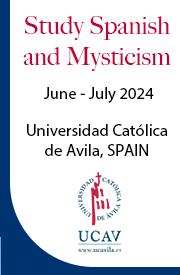Our colleague Peter Brown has recently raised the concern in these columns that Roe v. Wade will indeed continue to be hard to overturn, and yet even worse: that Roe has so altered the culture in which some of us had grown up that the casual acceptance of abortion may continue even after Roe has faded from our law and our memories.
But the point reveals its own converse. It was the change in the laws – brought about by Roe, sweeping away protections from the child in the womb, dissolving at the same time the moral inhibitions on throwing away that life of the unborn child – that reshaped the culture. And in that case we can hardly begin by assuming that the gradual change back in the laws – the gradual cutting back of Roe, the gradual extending of protection to child, the step-by-step restoration of moral inhibitions – may have no effect in turning the culture back yet again to that reverence for life, long woven into our laws, and never – never – fully purged from our people.
Back in 1989, in the case of Webster v. Reproductive Health Services, the Supreme Court made what looked to be the first move to return the issue of abortion to the legislative powers of the states. With Chief Justice Rehnquist writing, the states were invited to protect the growing infant in the womb even before the onset of viability. But that move set off a virtual firestorm in parts of the country, especially in New Jersey and New York.
Certain people were panicked that they would be deprived overnight of a “right” that they regarded now as more fundamental in their lives than the freedom of religion and speech. And some pro-life politicians in those areas, losing their nerve, flipped overnight. But as I’ve argued in these columns, even Justice Kennedy has been willing to join a five-person majority to keep sustaining pro-life legislation, moving step-by-step, bringing the public along with each step, getting people more and more confirmed in the notion that some abortions may rightly be restrained. And with each step stirring no panic in the land.
At the same time, we’ve seen the movement in public opinion, as a majority of people in surveys now count themselves as pro-life, with that movement especially noticeable among the young. We cannot discount the experience that has altered minds, and triggered even in the young a minor recoil from abortion. Still less should we discount the effect of legislators, in pressing on, keeping the issue before the public. We’re reminded of some old lessons: that there is an “art of overruling,” better and worse ways for bad cases to be undermined until they are finally, in a shorter step, toppled.

A majority of people in surveys now count themselves as pro-life. [Gallup]
In the meantime, as our colleague notes, most people in the country will be within a one-day drive of a state with liberal laws on abortion. But as that savvy Washington hand, Donna Fitzpatrick Bethell, observes, it may make a notable difference that the people setting off in their cars understand that they are driving now because what they are doing is regarded where they live as something shady, unseemly, disreputable.
Part of my concern then for the pessimism shown by some of our friends is that it backs into the assumptions of Judicial Supremacy. It assumes, first, that nothing much may be done by the political branches of the government, until the Court overturns Roe. It discounts what the Court may do in collaboration with pro-life legislators and executives in sustaining new measures to cast barriers before abortion and encourage protection for the child.
And yet more than that, it settles in with the myopia that now seems to afflict so many people who do “conservative jurisprudence.” The assumption seems curiously and firmly entrenched that the Supreme Court can do nothing more than return the subject of abortion to the states. But the Court, for over a hundred years now, has cultivated the precise questions to ask when local governments withdraw the protections of the law from those human “persons” who happen to be Chinese, resident aliens, or people afflicted with disabilities.
The Court has sharpened its collective wit over the years in detecting reasons quite “arbitrary” for removing a whole class of human beings from the circle of “rights-bearing” beings. We have these small beings who cannot, we know, be anything other than human at every stage of their lives. Their human standing does not depend on their height or weight, or facility of speech. Are they to be withdrawn from the protections of the law – or the category of “persons” – because they have not developed their limbs or their powers of speech? Other persons have lost limbs and speech without losing the protection of the law.
On all of this we may have more to say in another column. But we should note that there is nothing here arcane, nothing here that does not readily fall into the ensemble of tools that the judges have long used. Nothing in the Constitution stands in the way; indeed the very principles of the Constitution become the sources of the principled questions that bring focus to the problem. For the judges it is mainly a matter of recalling what they’ve known all along, and with their imaginations gently opened again, looking anew.















